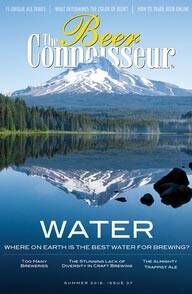Start 14-Day Trial Subscription
*No credit card required

What is Belgian Dark Strong Ale?
Some of the most highly sought-after and elusive beers in the world fall into the Belgian Dark Strong Ale category. For many beer connoisseurs they are considered the holy grail of the beer world, their complexity and character matched only by their rarity and mystique. This is particularly true of certain beers produced by six monastic breweries in Belgium and one in the Netherlands, known as Trappists. These seven breweries are the only ones in the world to carry the “Authentic Trappist” appellation – an official designation established in 1997 to denote beers brewed by the order at their own facilities.
The most storied example is probably the Westvleteren 12, brewed at the Abbey of St. Sixtus in Belgium’s West Flanders province. Westvleteren 12 is one of the most difficult beers in the world to come by – at least honestly, that is. It is available only at the abbey gates, and beer lovers from all over the world have made pilgrimages there to receive their allotment. However, to the dismay of the Brothers of St. Sixtus, the high demand for the 12 has provoked some enterprising individuals to purchase and resell the beer online for a sizeable profit. That has made the 12 somewhat easier to find, but, since the brewers sell their coveted beer at the abbey only to sustain their own work and charitable ventures, it has also diminished its aura just a bit.
Many other beers in the dark strong style exist today, often being labeled “abbey” beers since they’re not technically brewed by or at any of the seven recognized Trappist monasteries. Several of these have managed to gain a devoted following and are thought by many discerning beer drinkers to rival the Trappist beers in quality. St. Bernardus, in Watou, Belgium, is one such brewery. Their Abt 12 is a marvelous example of the style, highlighting a pleasantly warming brandy-like character and notes of coconut.
The best dark strong ales will be marked by a richness and strength matched only by their smoothness and complexity of flavor. Being the strongest of the Trappist or abbey-style beers, dark strong ales are known for their fruity esters – a byproduct of the special yeast strains – and high gravity, resulting most often from additions of caramelized sugar, which add complexity, color and alcohol strength.
In terms of the grain bill, pale or pilsener malt is most commonly employed as a base, and some lightly roasted specialty grains, typically Munich-style, are also used. “Noble” hop varieties, like Tettnanger or Hallertauer are common, as are Belgian Styrian Goldings hops, mostly to add complexity, earthiness and a slight spicy character without imparting aggressive bitterness.
On the nose you’ll encounter a complex array of fruity esters and bready malts, along with some spiciness and perceivable, but not “boozy,” alcohol. Raisins, plums and figs typify the fruit notes, while the malts are often described as caramel and bread (but never roasted or burnt). Some phenols from the hops are also evident but are not dominant.
In the glass, dark strong ales range between dark amber and brown, typically with good clarity, and they display a rocky, off-white to tan head.
Like the nose illustrates, the dark strong ale is a complex balance of sweet malts, fruit and spice in varying degrees, depending on the brewer, the age of the beer and its serving temperature. Sweet maltiness is typically somewhat forward, offset by phenols and fruit esters. The finish is surprisingly dry in some examples and carbonation levels are usually fairly high, resulting in a smooth finish with some residual alcohol warmth lingering in the mouth.
Belgian-style dark strong ales hold their own quite well when paired with strong cheeses or savory entrees. Try pairing one with blue cheese, grilled or roasted meats, or rich, dense zucchini bread.
Look here for Belgian Dark Strong Ale reviews by our panel of judges.



